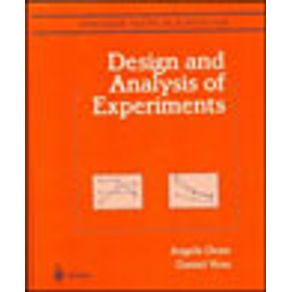The design and analysis of experiments is an essential part of investigation and discovery in science, of process and product improvement in manufacturing, and of comparison of competing protocols or treatments in the applied sciences. This book offers a step by step guide to the experimental planning process and the ensuing analysis of normally distributed data. Design and Analysis of Experiments emphasizes the practical considerations governing the design of an experiment based on the objectives of the study and a solid statistical foundation for the analysis. Almost all data sets in the book have been obtained from real experiments, either run by students in statistics and the applied sciences, or published in the scientific literature.Details of the planning stage of numerous different experiments are discussed. The statistical analysis of experimental data is based on estimable functions and is developed with some care. Design and Analysis of Experiments starts with basic principles and techniques of experimental design and analysis of experiments. It provides a checklist for the planning of experiments, and explains the estimation of treatment contrasts and analysis of variance. These basics are then applied in a wide variety of settings. Designs covered include completely randomized designs, complete and incomplete block designs, row-column designs, single replicate designs with confounding, fractional factorial designs, response surface designs, and designs involvingnested factors and factors with random effects, including split-plot designs. The book is accessible to all readers who have a good basic knowledge of expected values, confidence intervals and hypothesis tests. It is ideal for use in the classroom atboth the senior undergraduate and the graduate level. A guide to the use of the SAS System computer


